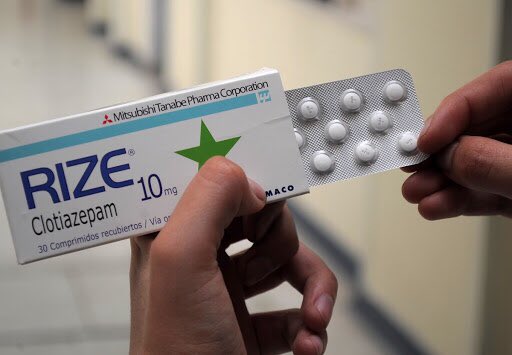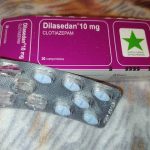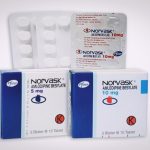Rize 5mg & 10mg: Uses, Benefits, Dosage, Side Effects, Interaction, Addiction

What is Rize?
Rize is a brand of clotiazepam, a benzodiazepine analog with anxiolytic, skeletal muscle relaxant, anticonvulsant and sedative effects. Rize is used in the treatment of anxiety disorders and insomnia.
People with anxiety disorders have uncontrollable worries about common situations. They may have symptoms such as feeling that something bad will happen or being unable to calm themselves. While people suffering from insomnia find it hard to fall asleep, hard to stay asleep, or wake up too early and not be able to get back to sleep.
Rize misuse can lead to addiction, which is when you’re unable to stop taking a drug, even though it may be causing harm. With dependence, your body becomes reliant on a drug to function as usual. Dependence can lead to withdrawal symptoms if you suddenly stop taking a drug. Taking Rize, even as prescribed, can cause your body to become physically dependent.
Rize is not approved for sale in the U.S. or Canada, but has been approved in the U.K. It is a schedule IV drug in Canada.
How it works
Rize is a benzodiazepine analog that works by attaching itself or binding to benzodiazepine receptors. This enhances the action of Gamma-aminobutyric acid (GABA) a chemical that is made in the brain, increasing the frequency of opening of the channel which slows down the central nervous system. This produces a calming, sedative effect that helps with anxiety.
How long do the effects of Rize last?
Rize has a half-life of between 6.5 to 18 hours. After oral ingestion of a single 5 mg dose of Rize the effects may start to be felt within an hour and the actual physiological effects of the drug can last for up to 6 hours.
How should I take Rize?
Rize comes as drops, oral tablets, and sublingual tablets to take by mouth. Follow the directions on your prescription label carefully, and ask your doctor or pharmacist to explain any part you do not understand. Take Rize exactly as directed.
The recommended dose of Rize for the short-term management of anxiety in adults is 5-15 mg in divided doses with a maximum dose of 60 mg daily.
For sleep disorders, the recommended dose of Rize in adults is 10 mg as a single dose at night. In both cases (anxiety and insomnia) dose reduction may be necessary for elderly patients because in elderly men the elimination half-life is longer and in elderly women, the volume of distribution is increased.
Dosage is based on your medical condition, age, and response to treatment. Your dose may be gradually increased until the drug starts working well. Follow your doctor’s instructions closely to reduce the risk of side effects.
Though it helps many people, Rize may sometimes cause addiction. This risk may be higher if you have a substance use disorder (such as overuse of or addiction to drugs or alcohol). Take this medication exactly as prescribed to lower the risk of addiction. Ask your doctor or pharmacist for more details.
Does stopping Rize cause withdrawal symptoms?
Yes, stopping Rize treatment can cause withdrawal symptoms. Withdrawal symptoms are side effects that happen when you stop taking a drug that your body has become dependent upon.
Withdrawal symptoms from Rize can be mild or serious, and can include:
• blurred vision
• diarrhea
• insomnia (trouble sleeping)
• muscle cramps or twitches
• seizures
• trouble concentrating
In addition, anxiety or symptoms of anxiety may occur if you stop Rize. It’s not known if this is due to withdrawal or to symptoms of your condition getting worse after stopping the medication.
For this reason, it’s important that you do not stop taking Rize unless your doctor specifically advises you to do so. You also should not change your dose or take the medication in a way that’s different from your doctor’s instructions. Missing doses of Rize can also cause withdrawal symptoms.
If you and your doctor agree that you should stop taking Rize your doctor will suggest a way to taper your dose. (Tapering a dose means to slowly decrease the dose over time.) This helps lower your risk for withdrawal symptoms from Rize.
How long does Rize stay in your system?
The length of time Rize is detectable in the system varies depending on a variety of factors. These can include body mass index (BMI), how long the drug has been taken for, in what volume, age of the user, and gender. It also changes depending on which of the four main types of identifying test is used. These are urine testing, blood testing, hair follicle testing, and saliva testing. The length of time Rize is identifiable in each test is as below:
| Type of Test | Detection Window |
| Urine | Up to 6 weeks |
| Blood | Up to 48 hours |
| Hair | Up to 90 days |
| Saliva | Up to 10 days |
As drugs like Rize break down in the body, they form separate substances known as metabolites. These metabolites can occasionally have a longer half-life than the substance itself.
What are the side effects of Rize?
Rize may cause side effects. Tell your doctor if any of these symptoms are severe or do not go away:
• Amnesia
• Changes in libido
• Changes in salivation
• Confusion
• Depression
• Drowsiness and lightheadedness
• Dysarthria
• Gastrointestinal disturbances
• Headache
• Hepatotoxicity
• Muscle weakness and ataxia.
• Sedation
• Slurred speech
• Tremor
• Urinary retention or incontinence
• Vertigo
• Visual disturbances
Rize may cause other side effects. Call your doctor if you have any unusual problems while taking this medication.
If you experience a serious side effect, you or your doctor may send a report to the Food and Drug Administration’s (FDA) MedWatch Adverse Event Reporting program online (http://www.fda.gov/Safety/MedWatch) or by phone (1-800-332-1088).
What medications can interact with Rize?
Rize can interact with several medications, they include:
• Cimetidine
• Clarithromycin
• Darunavir
• Erythromycin base
• Erythromycin ethylsuccinate
• Erythromycin lactobionate
• Erythromycin stearate
• Idelalisib
• Itraconazole
• Ketoconazole
• Nefazodone
• Rifabutin
• Rifampin
• Sodium oxybate
• Valerian
Can I drink alcohol while taking Rize?
No, you shouldn’t drink alcohol while taking Rize because it can interfere with your judgment, thinking, and motor skills. It can also make you drowsy and cause your breathing to slow down or stop.
Also, your body processes alcohol and Rize in similar ways. That means that if you drink alcohol, this drug might take longer to leave your body. This may cause worse side effects.
Can a pregnant or breastfeeding woman take Rize?
No, women who are pregnant should avoid taking Rize unless the benefit outweighs the risk to the fetus. There is very little information is available on the passage of Rize into milk as a result the medication is best avoided during breastfeeding.





